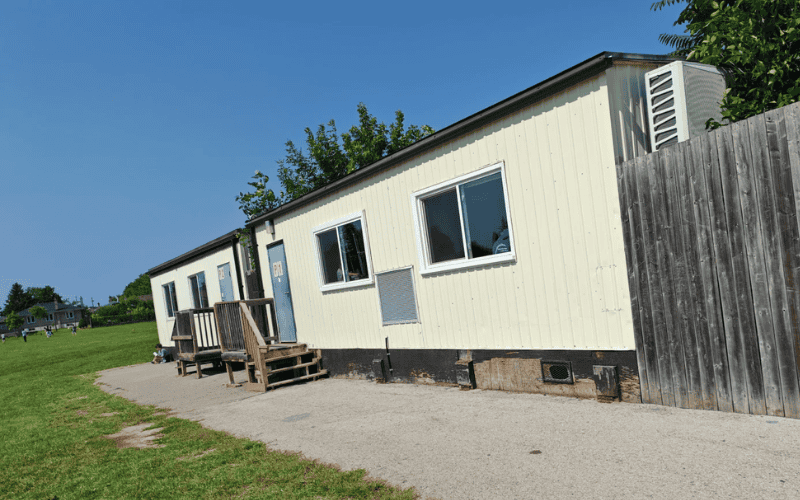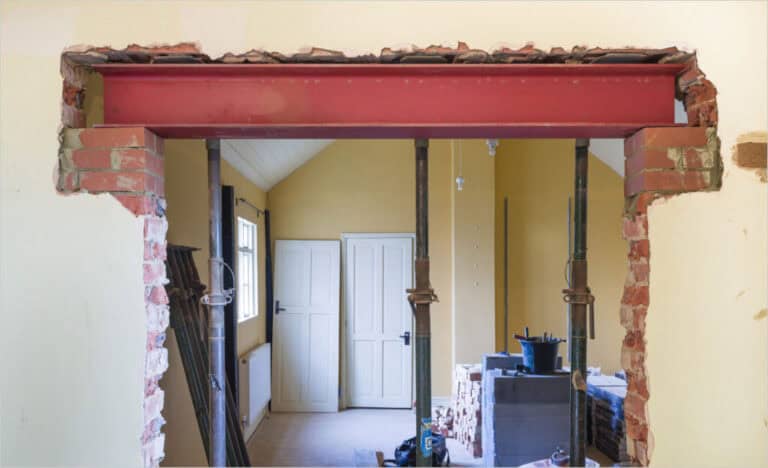Depending on the materials, design, and the environment in which they are used, portable classrooms can typically last 20 to 30 years. What factors determine whether a unit will stand the test of time—or need to be replaced sooner than expected?
Whether you are a school administrator, facility manager, or just curious about the lifespan of a portable classroom, this comprehensive guide will walk you through the factors that affect its lifespan, practical strategies to extend its lifespan, and tips for maintaining a portable classroom so that it remains a valuable asset for years to come.
Typical Lifespan Expectations of Portable Classroom
Portable classrooms typically have an expected lifespan of 20 to 30 years, depending on various factors such as construction quality, environmental conditions, usage, and maintenance. However, this can vary based on the specific design, materials, and how well the classroom is maintained throughout its life.
For example, some well-maintained units built with high-quality materials may last longer, while others may show signs of deterioration earlier, particularly if exposed to harsh environments or heavy use.
Temporary vs. Permanent Portable Classrooms
Temporary Portable Classrooms: Typically, temporary units are intended to be used for a shorter period, often ranging from a few years to around 10 years. These units are designed with cost-effectiveness and mobility in mind, so they may not be built to the same durability standards as permanent units. While they can still last 20 years with proper care, their lifespan tends to be shorter due to their more economical construction.
Permanent Portable Classrooms: These units, while still considered portable, are generally built with more durable materials and are intended for long-term use. They often incorporate better insulation, higher-quality finishes, and more robust structures designed to withstand years of heavy use and various environmental conditions. These classrooms may reach or exceed the 30-year lifespan with proper maintenance and care, and can even be considered a permanent addition to a school’s infrastructure if they are maintained properly.
Factors Affecting the Lifespan of a Portable Classroom
1. Construction Quality of Portable Classroom
Materials Used
- The materials chosen for constructing portable classrooms play a significant role in their overall durability and longevity.
- Common materials include wood, steel, and vinyl. Wood may be more prone to weathering and pests, whereas steel offers higher strength and resistance to environmental factors.
- Vinyl, used for siding, can be resistant to moisture but may degrade under constant UV exposure. Ensuring the longevity of the classroom hinges on the correct combination of these materials.
Manufacturing Standards and Craftsmanship
- The quality of manufacturing also impacts the lifespan. Portable classrooms that are built with high standards, using precise craftsmanship and rigorous quality control processes, tend to last longer.
- The risk of structural failures over time can be mitigated through properly designed joints, seals, and structural reinforcements.
Foundation Type and Stability
- The foundation on which the portable classroom is placed directly influences its durability. A stable and level foundation aids in preventing shifting or settling, thereby mitigating the risk of structural damage or uneven wear.
- Foundations made of concrete or reinforced steel provide the best stability, whereas less durable foundations may require more frequent adjustments and repairs.
2. Environmental Conditions of Modular Classroom
Climate
- Extreme temperatures, high humidity, and excessive precipitation can accelerate wear and tear on modular classrooms. Hot climates can lead to material expansion and contraction, potentially causing cracks in the exterior or flooring.
- Cold climates, particularly those with freezing conditions, can cause frost damage or increase the likelihood of water infiltration. Heavy rainfall and humidity also contribute to mold and mildew growth, which can degrade interior conditions.
Exposure to Sun, Wind, and Other Environmental Elements
- Direct exposure to harsh sunlight can cause fading, cracking, and degradation of the exterior materials, particularly vinyl and wood. Wind, especially in areas prone to storms, can stress structural components.
- Over time, exposure to these elements can significantly reduce the building’s lifespan unless proper protective measures are taken, such as UV-resistant coatings or wind-resistant designs.
Risk of Natural Disasters
- In regions prone to natural disasters like floods, earthquakes, or hurricanes, portable classrooms face increased risk of damage. Floodwaters can warp wooden structures, while earthquakes may compromise the structural integrity of poorly reinforced buildings. Although modular classrooms are often designed to be more mobile, their vulnerability to natural disasters is a critical factor in determining their lifespan.
3. Usage and Maintenance of Portable Classroom
Frequency of Use and Occupancy Levels
- The frequency of use of a portable classroom accelerates the appearance of wear and tear. High occupancy and frequent use of plumbing or electrical systems can lead to more frequent repairs and maintenance needs. Overcrowding or constant usage can cause accelerated deterioration of flooring, walls, and furniture.
Proper Cleaning and Upkeep
- Consistent cleaning and maintenance are crucial for extending the lifespan of a portable classroom. Neglecting to maintain cleanliness or perform basic upkeep, such as inspecting and cleaning HVAC systems or checking for leaks, can lead to a decline in structural integrity and a decrease in the classroom’s overall lifespan.
Timely Repairs to Prevent Further Damage
- Addressing minor issues promptly is one of the most effective ways to extend the life of a portable classroom. Minor cracks, leaks, or signs of wear should be promptly addressed to prevent them from escalating into larger, more expensive issues. Neglecting repairs can cause further damage, potentially compromising the entire structure.
Pest Control and Prevention Measures
- Portable classrooms, especially those made of wood, are susceptible to pests such as termites or rodents. Performing regular inspections and implementing pest control measures can help safeguard the classroom’s structure and safety from infestations.
4. Relocation of Modular Classroom
Number of Times the Unit is Moved
- Frequent relocations can shorten the lifespan of a modular classroom. Each time the structure is moved, there is a risk of physical damage to the framework, plumbing, or electrical systems. Frequent relocation of a unit increases the likelihood of wear and tear on its structural components.
Conditions During Transport
- The conditions during transport, including the distance traveled and the roughness of the route, also impact the classroom’s durability. Moving a modular classroom over long distances, or through areas with bumpy or uneven roads, increases the risk of structural damage, especially if the unit is not properly secured or protected.
Expertise of the Moving Company
- The skill and experience of the moving company are crucial in ensuring the safe transport of the classroom. Damage during loading, unloading, or transport can be caused by an inexperienced or careless team. To minimize the risk of damage during relocation, it is crucial to hire professionals specializing in moving portable structures.

Signs Your Portable Classroom May Need Replacement or Major Repairs
It’s important to watch for signs that your portable classroom might require significant repairs or replacement. Here are some key indicators:
1. Structural Damage
- Roof Leaks: Persistent leaks can cause interior damage and mold. If repairs don’t fix the issue, the roof may need replacing.
- Foundation Issues: Cracks or uneven floors signal foundation problems, compromising stability and making relocation harder.
2. Electrical or Plumbing Failures
- Electrical Problems: Frequent circuit breaker trips, exposed wiring, or flickering lights are signs of electrical issues that may require a full system upgrade.
- Plumbing Failures: Leaks or low water pressure can indicate failing pipes that, if not fixed, could lead to larger problems.
3. Rust, Mold, or Pest Infestations
- Rust: Extensive rust weakens structural components and indicates prolonged exposure to moisture.
- Mold: Mold growth, particularly resulting from leaks, poses health risks and can cause material damage.
- Pests: Termites or rodents can severely damage the structure, requiring major repairs or replacement.
4. Inefficient Insulation
- Poor Insulation: Outdated or ineffective insulation can lead to energy inefficiency and uncomfortable temperatures, possibly requiring upgrades or full replacement.
Being vigilant about potential issues can help prevent larger, more expensive problems in the future. Regular maintenance and prompt repairs are vital for ensuring the longevity of your portable classroom. If persistent problems arise, consider undertaking major repairs or replacement to maintain a safe and efficient learning environment.
How to Extend the Lifespan of a Portable Classroom
To ensure your portable classroom lasts as long as possible, it’s essential to invest in quality, maintain it properly, and minimize stress from relocation. Here are key strategies for maximizing its longevity:
1. Choose a High-Quality Unit
- Research Reputable Manufacturers: Opt for trusted manufacturers like Steel PRO PEB. We are known for durable, well-constructed portable classrooms, and offer high-quality prefabricated buildings designed to withstand harsh conditions.
- Invest in Quality Materials: Choose units constructed from robust, weather-resistant materials that are compatible with the climate in which they will be utilized.
- Long-Term Durability: Choose features that contribute to long-term performance, such as reinforced roofing, durable flooring, and weatherproofing.
2. Proper Installation and Maintenance
- Stable Foundation: Ensure the classroom is installed on a level, secure foundation to prevent settling or shifting over time.
- Follow Maintenance Guidelines: Following the manufacturer’s guidelines for maintenance and repairs is essential for preserving the structural integrity of the unit.
- Regular Cleaning and Inspections: Establish a regular cleaning schedule and conduct periodic inspections to catch minor issues before they become major.
- Prompt Repairs: Promptly address minor issues to prevent them from growing into larger, more expensive problems.
Steel PRO PEB can assist with the installation process, provide remote expert guidance services, daily inspection recommendations, maintenance guides, etc.
3. Minimize Relocation
- Plan for Long-Term Placement: If possible, select a permanent location to avoid the wear and tear from multiple moves.
- Choose the Right Location: Pick a spot that’s shielded from harsh weather conditions like direct sunlight, high winds, or flooding.
- Hire Professionals for Relocation: When moving is necessary, always use experienced professionals to minimize damage during transport.
4. Additional Tips for Longevity
- Upgrade Insulation and Roofing: Consider improving insulation, roofing, and plumbing systems to prevent leaks and improve energy efficiency. We offer insulated steel buildings with advanced roofing options, helping to keep your classroom comfortable and energy-efficient.
- Climate Control: Regulate the temperature using air conditioning or heating to prevent moisture accumulation, which can cause structural damage. Our durable steel walls provide an excellent barrier against temperature fluctuations, reducing wear on internal systems and promoting energy savings.
By following these strategies, you’ll extend the useful life of your portable classroom, ensuring it remains a safe, efficient, and cost-effective solution for years to come.

When Is It Time to Replace a Portable Classroom?
Determining the appropriate time to replace a portable classroom is essential for both cost-efficiency and safety. Here are the key factors to consider:
Cost of Repairs vs. Replacement
- Frequent or High-Cost Repairs: If the repairs are constant or expensive, replacing the classroom might be more cost-effective in the long run.
- Long-Term Expenses: Older units may result in higher ongoing maintenance and energy expenses. Investing in a new, efficient model could lead to long-term cost savings.
Technological and Safety Considerations
- Energy Efficiency: Older classrooms may not meet current energy standards, leading to higher bills. Replacing it with a modern, energy-efficient model could reduce costs.
- Regulation Compliance: If the classroom no longer meets safety or accessibility standards, replacement ensures compliance with current codes.
- Health and Safety: If there are issues like mold or pests that repairs can’t fix, replacement is necessary for a safe environment.
What to Do with Your Old Modular Classroom?
When a modular classroom reaches the end of its life, there are several options to consider before disposal:
Repurposing: If the classroom is still in good condition, it can be repurposed for storage, offices, or other non-educational uses. This extends its useful life and helps reduce waste.
Selling or Donating: If the classroom is still functional, consider selling or donating it to another institution or organization in need. This not only helps others but also maximizes the value of the unit.
Recycling: Once the classroom can no longer be used, recycling its materials is crucial. Many components, including steel, wood, and vinyl, can be repurposed or recycled, thereby reducing their environmental footprint.
Proper Disposal: When a unit contains hazardous materials (e.g., asbestos, lead paint), proper disposal is essential. Complying with regulations for handling hazardous substances helps minimize environmental harm and safeguard human health.
Consider SteelPRO PEB’s Portable Classroom as a New Alternative
At Steel PRO PEB, we provide durable, energy-efficient, and compliant portable classrooms. If your unit is aging and costly to maintain, we offer high-quality replacements that ensure safety, efficiency, and long-term savings. Let us help you make the right choice for your educational facility.

